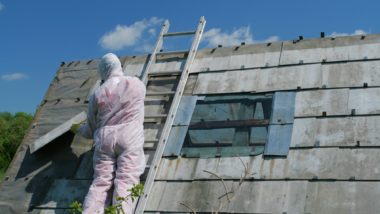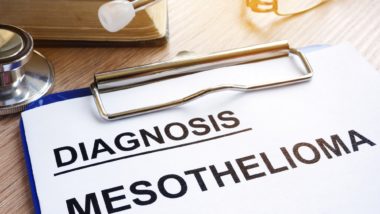Top Class Actions’s website and social media posts use affiliate links. If you make a purchase using such links, we may receive a commission, but it will not result in any additional charges to you. Please review our Affiliate Link Disclosure for more information.
The link between lung cancer and smoking is so well known, it’s easy to forget that non-smokers can get lung cancer as well. The causes range from secondhand smoke to environmental factors and workplace exposure to various toxins.
Most Common Cancer in the U.S.
Lung cancer is the leading cause of cancer deaths in America, according to the Mayo Clinic. The disease causes more deaths every year than colon cancer, prostate cancer, ovarian cancer, and breast cancer combined.
The condition is particularly deadly because it usually lacks symptoms in its early stages. Late-stage symptoms of lung cancer may include a persistent cough, coughing blood, shortness of breath, chest pain, hoarseness, weight loss, bone pain, and headache. However, once these symptoms show up, lung cancer is usually in its advanced stage, so it’s much harder to treat.
Almost everyone knows a lifelong smoker who has been diagnosed with lung cancer. These stories are used as cautionary tales to warn children and young adults of the perils of smoking.
However, the American Cancer Society says that about 20 percent of lung cancer deaths each year happen to non-smokers. In 2018, this translated to some 30,000 Americans. If lung cancer with no history of smoking was a separate category, it would rank in the top 10 deadliest cancers in the United States.
Other Lung Cancer Risks
According to the Cancer Treatment Centers of America, a variety of things can cause lung cancer, and smoking does not have to be involved. Secondhand smoke, age, and family history may play a role. The disease can also be caused by exposure to dangerous chemicals or materials such as radon gas and asbestos.
Radon gas has been linked to lung cancer. High levels of radon, a colorless, odorless, radioactive gas found in rocks, soil, and even in the water supply, “can lodge in the lining of the lungs, where they can give off radiation,” according to the American Cancer Society (ACS). “This radiation can damage lung cells and eventually lead to lung cancer.”
Radon can enter homes and buildings through holes or cracks in the floors or walls. The ACS explains that basements and crawl spaces typically contain the highest levels of radon since these areas are closest to the soil or rock.
“Therefore, people who spend much of their time in basement rooms at home or at work have a greater risk for being exposed,” according to their website.
When radon gas is inhaled over a long period of time, it breaks down into small particles that get into the lungs and damage the cells. Cell damage caused by radon gas may increase the chance of cellular mutations – leading to the development of lung cancer.
Asbestos is another environmental hazard that may lead to the development of lung cancer. The material was formerly used in building supplies and industrial products due to its natural resistance to electricity, fire, and chemical erosion.
However, when asbestos products are moved or disturbed, they release small asbestos fibers into the air. Evidence presented in recent lawsuits also indicates that asbestos fibers are found in talc, the basic ingredient in products such as baby powder.
When asbestos fibers are released into the air, they can be inhaled. Once in the lungs, the fibers are difficult to expel and can cause inflammation and cellular damage. As with radon gas, this cellular damage may be the precursor to cell mutations and the development of cancer. It should be noted that asbestos lung cancer is different from mesothelioma, another form of cancer associated with asbestos exposure.
While many people may come into contact with asbestos through occupations such as construction, automotive work, railroad work, or factory work, some people may also be exposed through contaminated talc products. Talc is commonly used in household products including baby powder, cosmetics, and deodorant. The talc used in these products is often mined in close proximity to asbestos, making it possible for asbestos particles to contaminate the talc.
Additionally, as many common household products contain talc, potential victims may not even be aware of their possible exposure or the risks associated with these products.
Lung cancer caused by exposure to asbestos particles may take years or even decades to develop, making it difficult for victims to protect themselves from the potential risks of asbestos exposure until it is too late. By the time the condition is diagnosed, it may already be in the later stages of the disease. Instead, people who are likely to come into contact with asbestos may want to take preemptive precautions to protect themselves.
If you are employed in an occupation that brings you into close contact with asbestos, you may be able to protect yourself from inhaling these particles by wearing protective gear. Some asbestos workers may be at risk of these particles sticking to their skin, hair, or clothing, where they may be transferred to the worker’s car or home and pose a risk to the worker’s family.
Many family members who shared a household with a relative who worked in an asbestos-hazard environment have developed asbestos-related conditions have been affected by second-hand exposure. By changing clothes and showering before leaving jobs where there is asbestos, workers may be able to protect themselves and their families.
Environmental and Industrial Exposure
The effects of outdoor air pollution on respiratory health are well-known and documented. According to the World Health Organization, airborne pollutants are a major cause of lung cancer. Fortunately, environmental regulations in the U.S. since the 1970s have reduced those risks for Americans.
Nonetheless, the Union of Concerned Scientists says that diesel exhaust and waste products from coal-fired power plants such as mercury, nitric oxide, sulfur dioxide and soot can cause lung cancer when inhaled for extended periods of time.
 Protecting Yourself
Protecting Yourself
Although it is important to acknowledge the link between lung cancer and smoking, other risk factors such as asbestos exposure radon gas and environmental pollution are equally as important and must also be considered. In many cases, exposure to asbestos and other hazardous substances may play a role, along with cigarette smoking, in the formation of lung cancer.
Some steps you can take to protect yourself from this disease are having your home tested for radon, avoiding secondhand smoke and using respirators with the correct type of filtration if you work in an industrial setting where exposure to toxic chemical fumes is a danger. Diet may also offer some protection. Scientific evidence indicates that anti-oxidants obtained from a diet rich in fresh fruits and vegetables can reduce the risk of many cancers, including lung cancer.
Join a Free Asbestos Cancer Class Action Lawsuit Investigation
If you or a loved one have been exposed to asbestos and were subsequently diagnosed with the following asbestos-related illnesses:
- Mesothelioma
- Lung cancer
- Larynx cancer
- Esophageal cancer
- Colon cancer
- Pulmonary asbestosis
- Asbestos-related pleural disease,
… then you may be eligible to file an asbestos lawsuit to seek compensation for your medical expenses, lost wages, pain and suffering, and other losses you have experienced.
If your loved one has passed away, you may also be able to file a wrongful death lawsuit to seek compensation for funeral expenses and other costs associated with your loved one’s illness.
Obtain a free case review now by filling out the form on this page.
An asbestos attorney will contact you if you potentially qualify to file an asbestos lawsuit or class action lawsuit. There is no cost or obligation associated with this case evaluation.
ATTORNEY ADVERTISING
Top Class Actions is a Proud Member of the American Bar Association
LEGAL INFORMATION IS NOT LEGAL ADVICE
Top Class Actions Legal Statement
©2008 – 2024 Top Class Actions® LLC
Various Trademarks held by their respective owners
This website is not intended for viewing or usage by European Union citizens.
Get Help – It’s Free
Join a Free Asbestos Cancer Class Action Lawsuit Investigation
If you qualify, an attorney will contact you to discuss the details of your potential case at no charge to you.
PLEASE NOTE: If you want to participate in this investigation, it is imperative that you reply to the law firm if they call or email you. Failing to do so may result in you not getting signed up as a client or getting you dropped as a client.
E-mail any problems with this form to:
Questions@TopClassActions.com.
Oops! We could not locate your form.


 Protecting Yourself
Protecting Yourself









